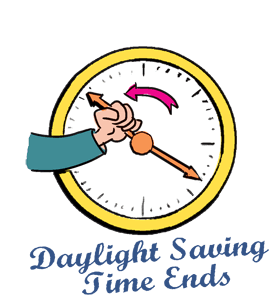Daylight Saving Time Ends
Quick Facts
| Hashtags | #DaylightSavingTime, #DaylightSavings |
|---|---|
| Related Hashtags | #FallBack |
| 2025 Date | November 2, 2025 |
| 2026 Date | November 1, 2026 |
2025 Holidays & Dates - US
| US & Common Holidays | ||
| Misc. & Int'l. Observancesℹ | ||
| Christian Holidays | ||
| Jewish Holidays |
› | ||
